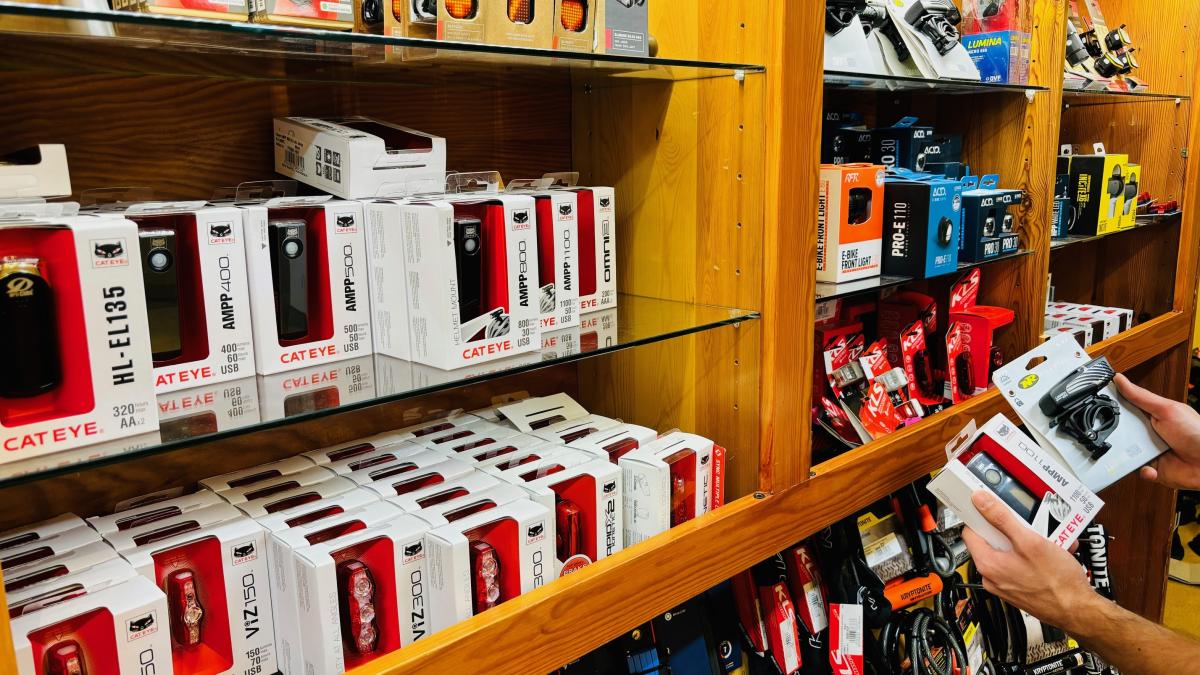Of course, what makes lighting safer depends on the application.
Let's start with the most important thing: If there is any reason to believe that a particular bicycle light is not safe to use in a particular circumstance, it is not for you and you should get a new one. And here we should not only think about whether it gives enough light, but also, for example, whether the battery capacity is right for us, whether we can fix it properly for the use (e.g. terrain), and so on...
To see and/or be seen
Obviously, the expectations are not the same in a well-lit city as they are, say, on a dark forest path, you have to decide whether you want to see, be seen or both. Obviously, the top end of the spectrum is a bike light that meets the "see AND be seen" principle to the maximum, which means that in any conditions, even in the dark, the light can provide a lasting light that allows you to handle the bike safely. In the countryside, of course, it is not just a question of 'seeing', but also of 'being seen', i.e. choosing better quality rear lighting.
If someone approaches you from behind at 100 km/h, they will cover a much greater distance than at 50 km/h in a few seconds before they perceive, react and decide. Moreover, we don't need to look at their absolute speed, because we are moving too. If we are doing 30 km/h and the car is coming from behind at 100 km/h, the difference is 70 km/h. In a city, the same difference is only 20 km/h for a car approaching at 50 km/h. In other words, the relative speed difference is three and a half times greater. If you want to be seen, you obviously need a traffic light on a country road that can be seen from hundreds of metres away. These distances/speeds are also a consideration if you want to see, because if you are doing 40 on the highway, you need to be able to see further to react to conditions.
It's not just brightness that matters...
We have to consider all the circumstances carefully. We may be cycling in the countryside, in winter, in sub-zero temperatures - in the latter case, it's not just brightness that matters, or the quality of the optics in terms of distribution. Very low temperatures will test the power source much more than if you live in, say, Florida. It's the same with precipitation and humidity: it doesn't matter what the seals are like. Fortunately, we can now say that only cheap lamps are not perfectly waterproof. Fixing is also an important aspect: some people need to be able to easily mount the lamp on several bikes, others need to have a bracket mounted on a concrete block on the same bike, so that they can snap the lamp onto it.
Flashing
If you only regularly cross from one side of the Margaret Bridge to the other in the dark, a "simple flashing light" may be just the thing. Obviously, here you only have to meet the criteria of "being seen", both front and rear. However, from a safety point of view, be very careful with the terms "just" and "satisfactory", and always choose the better one when considering.
Even in lower categories, there can be a big difference in quality and knowledge, and therefore price. the simplest flashlight sets start at one or two thousand forints (a small exaggeration, they are available at battery prices), but in practice they often end up in the bin after running out of batteries... Their knowledge does not even extend beyond the "crossing of the Margaret Bridge", the possibility of continuous operation makes them "soda away" if checked by a policeman.
The good news is that you can get good quality flashers for 5-10 000 HUF, so it's not the price that matters.
What to look out for when choosing a flasher: The back of the bike may not have a tube perpendicular to the direction of travel like the front handlebars. In this case, the simplest turn signals will focus practically a few metres behind your rear wheel, meaning it's as if cars coming up behind you can see you from the side at an angle of about 20 degrees. So it's worth choosing a rear indicator with a compensated saddle angle. The angle from which a turn signal is visible also varies, with the better ones being conspicuous from the side. It's worth considering buying a USB rechargeable flasher not only for environmental reasons, but also because you can top up with a little bit of charge anywhere, even if you realise at the last minute that it's flat. Obviously there are differences in brightness, so decide what you need.
Bicycle lighting powered by a dynamo/bicycle power source:
There is a wide range in price and quality. In addition to the dynamo lights available for classic trekking and city bikes, the proliferation of e-bikes has led to the introduction of special lights for pedelecs, which are battery-powered and can be controlled from the display. The rear light is almost always of good quality, while the front light can vary in brightness and optical quality, which is reflected in the price. Good quality optics spread the light evenly in front of you, less good ones produce a concentrated, patchy beam. This is why the "lumen war" is a bit like the "megapixel war" in cameras. A lamp with a high luminous intensity cannot compete with a serious product if it does not distribute this light properly. High-end front lights can cost in the hundreds of thousands, but they are high quality, weatherproof and everlasting.
Cycle lights powered by their own power source:
Manufacturers are also trying to come up with more expensive, "high-end" models for rear lights, but you can get good quality at a relatively affordable price. The extras include, for example, a rear light that is like a "brake light", which gives a stronger light when slowing down, or a model that projects a red laser light across the width of the bike onto the tarmac, and so on... However, from the point of view of the "see AND be seen" principle, the front light is obviously the more interesting. As you can read in the dynamic lights section, a lot depends on good optics, how the light is diffused/concentrated on the road. Combine this with a powerful, energy efficient light source and you have lighting that is specifically suited to driving. It shouldn't even be compared to driving a car, because for example, if you're cycling off-road in the dark, it's vital to be able to see even small sharp stones or other small obstacles.
The variation is not only in knowledge, but also in price. Front lights starting at around 20 000 HUF are generally suitable for driving in the dark on stretches without street lighting, but we are not talking about the light output of the more powerful models.It is worth obtaining precise information on the energy source and how much it can produce at maximum brightness.Usually these already have their own battery and can be charged via USB connection.They can also be used in a variety of modes, with good street lighting and reduced brightness.The quality of the housing and the sealing is also a price factor, and anyone who rides in winter and summer, in rain and snow, should pay attention to this.Not necessarily price dependent, but also look at where you want to mount the light and whether the model is practical in this respect. It is also a question of how easy it is to remove and whether the bracket will not move. If you regularly leave your bike unlocked in public places, you're not going to want to leave a fifty thousand euro lamp on it...
Some people are obsessed, for example, with speeding down the mountain at night or simply like to swim in the flood of light. On their bikes, you'll find "monsters", which are often external battery-powered lights with amazing brightness and rarely fill the shelves of the average bike shop. They can be used to ride in almost daylight at night, but one thing is important to remember: they can be considered as irregular on the road and can seriously disturb wildlife in the forest.There is a wide range in price and quality, and many people make them themselves.
On the basis of the above, front lamps can be roughly divided into three groups in terms of luminous intensity: lamps with a luminous intensity of around 300 lumen can be "driven safely" in unlit countryside, while lamps with a luminous intensity of around 500 lumen are suitable for more dynamic use, 20-30 km/roundabout, and lamps with 800-1000 lumens can even be used in the forest, where it is worth using a headlamp to "look" anywhere before turning or choosing a route.
We have deliberately not listed brands or highlighted models above, as the aim was more to clarify the principles.In the K2 Shop, we have also selected a range of over 100 different lamps so that our customers can find the ideal product for them, regardless of the brand, and we are happy to help them choose!



